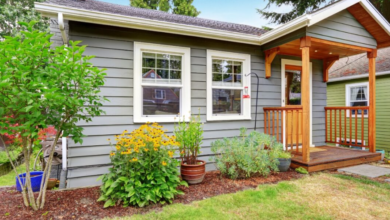How to choose the right property insurance

Start with a clear picture of what your place needs today. List valuables, note risks from weather or events, then match coverage options to real needs. Compare replacement value with actual cash value to avoid shortfalls later. Ask the insurer about limits for jewelry or gadgets. If you rent out a unit, include Rental Property Insurance so income and fixtures sit under the right cover. Keep records for proof, like receipts and photos. Review policy language with patience, then confirm that temporary living costs sit inside the plan.
Risk Profile
Every list starts with a short note that explains what follows. Read the Rental Property Insurance importantpoints, which are in the bullets, with care; each point helps you choose with clarity.
- Map threats unique to your building structure plus nearby hazards you cannot control.
- Check crime exposure using public data sources, then match protections to that picture.
- Note seasonal issues such as heavy rains or storms, then adjust terms accordingly.
See also: 5 Landscaping Hacks That Save Homeowners Money
Policy Types
Know the common policy forms before you sign. Named peril policies cover only listed events, while open peril policies cover everything except exclusions. Standard policies may exclude high-value items, so look for scheduled endorsements where needed. Liability must protect against guest mishaps or tenant disputes. Loss of rent requires special wording; confirm it exists. For multi-unit setups, consider master liability plus unit-based coverage. Keep the document simple; avoid clutter that hides key limits.
Deductible Fit
Each list begins with a brief guide that points to choices ahead. Read and then weigh every note, since these items shape out-of-pocket costs.
- Choose a number that you can pay quickly without stress or delay.
- Higher deductibles lower premiums, but never choose beyond your emergency fund.
- Ask if separate deductibles apply for wind or water, then budget for both.
Limit Setting
A tiny briefing goes first, so the bullets stay easy to follow. Use them as a compact checklist that turns needs into numbers.
- Calculate rebuild cost using current materials; avoid guessing with old estimates.
- Include fixtures, built-in storage, wiring, and pipes, and then confirm inflation guards apply.
- For contents, build a room-by-room list and update values once every year.
Exclusion Checks
Exclusions decide what does not get paid. Read this part slowly, since small lines make big gaps. Look for clauses about gradual wear or construction defects. Note any sublimits for valuables or electronics. Ask how mold or seepage gets handled. Confirm whether short-term rentals require special approval. If the wording feels unclear, request a simpler version. Finally, keep a written record of every clarification from the agent.
Claims Support
A short preface opens the list so you can use it as a guide. These points help you judge service quality before trouble arrives at the door.
- Study average claim timelines from reviews, and choose firms with steady resolution speed.
- Ask about twenty-four-hour reporting channels and verify multiple ways to submit evidence.
- Request sample documentation lists for common losses; prepare folders before you need them.
Cost Optimisation
This short note sets up choices that tame price without risking protection needs. Follow each point with care, since savings matter only when coverage remains strong.
- Bundle policies where allowed; check that each line keeps proper limits intact.
- Improve security with approved devices; ask for verified discounts after installation.
- Pay annually if possible to reduce fees, then schedule a renewal review every year.
Clear Path Forward
Good coverage balances price with strong terms that fit real-life needs. Start with accurate values for the building and contents, then select deductibles you can handle. Remove gaps by examining exclusions with focus. Measure service by claiming speed plus round-the-clock help. Keep paperwork ready for a fast response. Review each year as prices, risks, or upgrades change. Choose rental property insurance with care today so repairs, replacements, and liability duties never shake your savings tomorrow.



